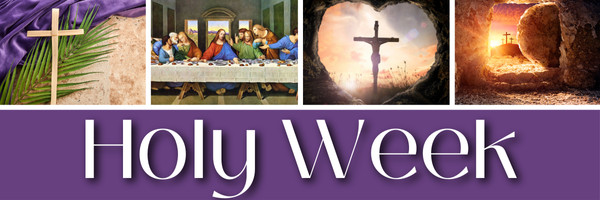 Dear readers, Catholic Online was de-platformed by Shopify for our pro-life beliefs. They shut down our Catholic Online, Catholic Online School, Prayer Candles, and Catholic Online Learning Resources essential faith tools serving over 1.4 million students and millions of families worldwide. Our founders, now in their 70's, just gave their entire life savings to protect this mission. But fewer than 2% of readers donate. If everyone gave just $5, the cost of a coffee, we could rebuild stronger and keep Catholic education free for all. Stand with us in faith. Thank you. Help Now >
Dear readers, Catholic Online was de-platformed by Shopify for our pro-life beliefs. They shut down our Catholic Online, Catholic Online School, Prayer Candles, and Catholic Online Learning Resources essential faith tools serving over 1.4 million students and millions of families worldwide. Our founders, now in their 70's, just gave their entire life savings to protect this mission. But fewer than 2% of readers donate. If everyone gave just $5, the cost of a coffee, we could rebuild stronger and keep Catholic education free for all. Stand with us in faith. Thank you. Help Now >
Saint Elizabeth Ann Seton: Uncompromising Widow, Mother and Catholic
"If I am right Thy grace impart still in the right to stay. If I am wrong Oh, teach my heart to find the better way" -- the prayer of Elizabeth Ann Seton as she contemplated entry into the fullness of truth found in the Catholic Church: a conversion which would ostracize her from family and friends, and which would cost her the financial support she so direly needed as a poor widow and mother of five children.
Highlights
Catholic Online (https://www.catholic.org)
1/4/2012 (1 decade ago)
Published in Christian Saints & Heroes
Keywords: Saint Elizabeth Ann Seton, first American born saint, St. Seton, conversion to the Catholic Faith, beauty of Catholicism, F. K. Bartels
GLADE PARK, CO (Catholic Online) -- Elizabeth Ann was born on 28 August 1774, in New York City, to non-Catholic parents, Dr. Richard Bayley and Catherine Charlton, who raised her as an Episcopalian. When Elizabeth was but three years old, her mother died, leaving her father to marry a devout Anglican woman with children of her own.
The Catholic Encyclopedia informs us that, educated primarily by her father, Elizabeth became an avid reader who took special interest in religious and historical subjects. As a young adult, she demonstrated a devotion to reading Sacred Scripture, especially the Psalms, and was always found wearing a crucifix about her neck. She often went about with her sister-in-law, Rebecca Seton, on missions for the poor, which led to the two becoming known as the "Protestant Sisters of Charity."
At age 19, Elizabeth married William Seton on 25 January 1794, and was blessed with five children. In about 1802, William's firm ended in bankruptcy due to the the combined loss of several ships at sea and the effects of the blockade by the United Kingdom of Napoleonic France. Soon after, William developed tuberculosis and was advised by doctors to travel to Italy for the benefits of a warmer climate. Elizabeth, along with her eldest daughter, attended William on the sea voyage to Italy; however, he died in December of 1803 shortly after his arrival there.
After William's death, Elizabeth stayed for a time in Italy with the Filicchi families, her husband's business friends, and was there first introduced to the profound beauty of the Catholic Faith. After visiting Catholic churches in Italy, she became all the more convincingly drawn to the sacred Liturgy of the Mass, the Eucharist, and the sacrament of Penance and Reconciliation.
Following the divine impulses of the Holy Spirit, Elizabeth sensed her eternal, spiritual and familial home was to be found in the Catholic Church. Further, the pious devotion displayed by the Catholics she met served only to strengthen her desire to immerse herself in the Gospel life transmitted in its fullness by holy mother Church.
The Catholic Life of Sacrifice
Yet anti-Catholic sentiment remained quite virulent in America at that time; therefore Elizabeth knew the decision to become Catholic was sure to cause alienation from friends and family -- a very serious consequence, since as a widow with children she was in dire need of financial support.
Nevertheless, after a period of significant fasting and prayer, she became certain of the divine origin of the Catholic Church as founded by Jesus Christ, and thus joined the ranks of the fullness of truth as a Catholic on the 14 of March, 1805 -- Ash Wednesday. The persecution Elizabeth feared became a reality: ostracized by her conversion, she was forced to provide for her children without aid from her relatives.
Here we arrive at an important element of St. Elizabeth's character: she was unwilling to compromise on the truth -- even at the cost of family and friends, even at the cost of personal comfort and security. She felt obliged in freedom to worship in Spirit and truth in Christ, called by the Father (see Jn 4:23), as a participant at the holy sacrifice of the Mass: the highest and most sublime form of Christian prayer. It would not be an exaggeration to say that she was willing to die for the Catholic Church.
Elizabeth's experience of persecution by American Protestants was not to end with her family. When she joined with a Catholic friend and his wife in an effort to open a school for boys in the suburbs of New York, the school was forced to close under false suspicion as a proselytizing scheme; and when Elizabeth's sister-in-law, Cecilia Seton, voiced her desire to become Catholic, Elizabeth suffered threats to be expelled from the state by the New York Legislature (ibid.).
Psalm 25 likely became the prayer of Elizabeth's heart: "Look upon me, have pity on me, for I am alone and afflicted. See how many are my enemies, see how fiercely they hate me. Preserve my life and rescue me; do not let me be disgraced, for I trust in you" (16,19-20). It is clear her prayers were answered in abundance.
Trust in God is Never Misplaced
After a great deal of struggle to support herself and her children, Elizabeth met Fr. Dubourg, who suggested she open a school for girls in Baltimore, which was begun on the feast of Corpus Christi in 1808. While there, her boys were brought to St. Mary's College, and thus Elizabeth rejoiced in God's care for her and her family, as well as the gift of being allowed to immerse herself in the Catholic Faith on a deeper level.
Elizabeth was soon given charge over a farm near the village of Emmitsburg, which was converted into an institution in order to teach poor children. There, along with the sisters who joined her, Elizabeth endured many hardships. The buildings were in a state of disrepair, the winters were cold, and there was little food. Nevertheless, as a result of the mortification often practiced by Elizabeth and the other sisters, their yoke seemed easy and their burden felt light. They lived in the freedom and joy experienced in a simple and peaceful life of holy abandonment to God's will.
Against her wishes, Elizabeth was elected superior of the new community at Emmitsburg, which, with a few modifications, followed the rule of the Sisters of Charity of St. Vincent de Paul. Mother Seton, now with 18 sisters at her side, together took their vows on 19 July 1813. From then on the community began to flourish, doing many works of charity, and came to be known with great respect and admiration.
St. Elizabeth Ann Seton's life showed forth a deep passion for love of God, compassion for the poor, and a holy zeal for the salvation of souls. Perhaps, on her providential exposure to the Catholic Faith, a desire for the consecrated, religious life surfaced as she fell in love with the profound ritual and the holy, pious silence so characteristic of the Catholic life in the Spirit.
Although the religious life of a convent would be impractical for a widow with children, St. Elizabeth continuously embraced just such a life as best her circumstances would allow. She is remembered for her many sacrifices, as well as for her love of teaching the poor children; for her gift of intellect; for her humility and mortification; for her perseverance; and for her unwavering dedication to the holy dwelling place of mother Catholic Church. She will stand forever as an example of true Christian discipleship.
After suffering from a pulmonary disease, Saint Elizabeth Ann Seton died at Emmitsburg, Maryland, on 4 January 1821. Beatified in 1963, she was canonized on 14 September 1975, by Pope Paul VI, and thus became the first American born saint.
-----
F. K. Bartels is a Catholic writer who knows his Catholic Faith is one of the greatest gifts a man could ever receive. He is a contributing writer for Catholic Online. Visit him also at catholicpathways.com
---
'Help Give every Student and Teacher FREE resources for a world-class Moral Catholic Education'
Copyright 2021 - Distributed by Catholic Online
Join the Movement
When you sign up below, you don't just join an email list - you're joining an entire movement for Free world class Catholic education.

-

- Stations of the Cross
- Easter / Lent
- 5 Lenten Prayers
- Ash Wednesday
- Living Lent
- 7 Morning Prayers
- Mysteries of the Rosary
- Litany of the Bl. Virgin Mary
- Popular Saints
- Popular Prayers
- Female Saints
- Saint Feast Days by Month
- Pray the Rosary
The surprising origins of the Easter Bunny — it’s not what you think!
The Way of the Cross: A Good Friday Reflection on Christ’s Final Journey
The Many Reasons Why We Call it Good Friday
Daily Catholic
 Daily Readings for Sunday, April 20, 2025
Daily Readings for Sunday, April 20, 2025St. Marian: Saint of the Day for Sunday, April 20, 2025
 Children's Prayer For Parents: Prayer of the Day for Sunday, April 20, 2025
Children's Prayer For Parents: Prayer of the Day for Sunday, April 20, 2025 Daily Readings for Saturday, April 19, 2025
Daily Readings for Saturday, April 19, 2025 St. Alphege: Saint of the Day for Saturday, April 19, 2025
St. Alphege: Saint of the Day for Saturday, April 19, 2025- Stewardship Prayer: Prayer of the Day for Saturday, April 19, 2025
![]()
Copyright 2025 Catholic Online. All materials contained on this site, whether written, audible or visual are the exclusive property of Catholic Online and are protected under U.S. and International copyright laws, © Copyright 2025 Catholic Online. Any unauthorized use, without prior written consent of Catholic Online is strictly forbidden and prohibited.
Catholic Online is a Project of Your Catholic Voice Foundation, a Not-for-Profit Corporation. Your Catholic Voice Foundation has been granted a recognition of tax exemption under Section 501(c)(3) of the Internal Revenue Code. Federal Tax Identification Number: 81-0596847. Your gift is tax-deductible as allowed by law.




 Daily Readings for Sunday, April 20, 2025
Daily Readings for Sunday, April 20, 2025 St. Marian: Saint of the Day for Sunday, April 20, 2025
St. Marian: Saint of the Day for Sunday, April 20, 2025 Children's Prayer For Parents: Prayer of the Day for Sunday, April 20, 2025
Children's Prayer For Parents: Prayer of the Day for Sunday, April 20, 2025 St. Alphege: Saint of the Day for Saturday, April 19, 2025
St. Alphege: Saint of the Day for Saturday, April 19, 2025

